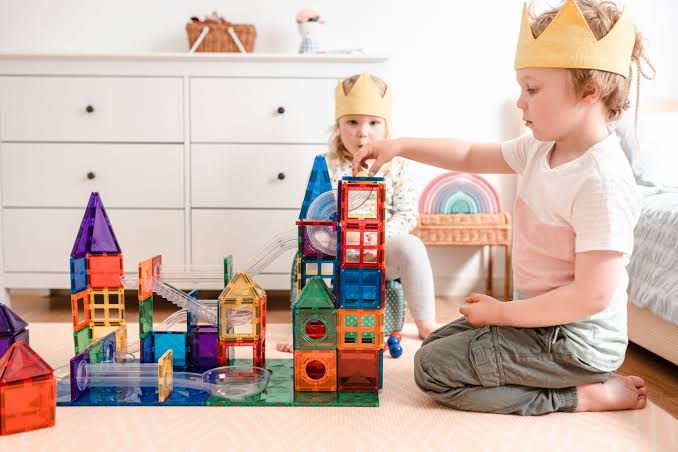When it comes to creative play, you will find various toy options under different age groups. As parents, you must work on keeping your child’s physical and emotional state balanced. Never jeopardise your little one’s mental development as the long-term effects can be impactful. On that note, magnetic tiles and block building have improved fine motor skills. They work as a meaningful play accessory. When you shop from reputed brands like Connetix tiles, you invest money in profound learning without staking fun play. In other words, your kid will begin to ask crucial questions as they construct, like what happens when two or more magnetised building blocks get snapped together until they have created something interesting.
Why put money into magnetic building blocks?
A significant number of Aussie kids have poor mental well being due to multiple reasons. New toys provide new experiences, but not all inspire active play. To put it another way, some gadgets are preferable to others when encouraging sociodramatic or other categories. Children must define what they’re doing, talk about their buildings, characterise their selections, browse and express their ideas, and start negotiating social struggles using magnetic building tiles.
These blocks get utilised for highways, ramps, animal trolleys, barns, gates, food stalls, in addition to houses and castles that get included in pretend play. In the end, if you prefer pretend-play for your child’s early brain development, they function great. Here is a list of other perks you will enjoy from buying Connetix tiles,
- Allows learning solo play
Because of their open-ended character, Connetix tiles are ideal for encouraging and practising individual play. Even though there is none to engage them, kids choose how they want to play, what they want to create, and how long they want to play. Building blocks are a simple approach to help toddlers and youngsters improve their motor abilities. The acts kids take while playing assist to develop their gross cognitive and fine motor muscles.
All you will have to do is solely teach your children how to link one block to the next to engage with these blocks. Because it includes magnets, it’s a lot easier to accomplish. Set one block next to another close together, and they will click together.
- Surges critical thinking
The magnetic construction blocks may be used to teach your kids about alphabets, shapes, sizes, numbers, and even colours and patterns. When your children play with magnetic blocks, they must solve any problem and make the notion they have within the brain a reality.
Many people find mathematics difficult, which might be due to a lack of foundation in the topic or a failure to comprehend mathematical ideas. When a youngster understands the geometry and mathematics included in the play activities, comprehending these principles in other settings will become easier.
While much of the design work, the magnetised tiles are tri-dimensional. The tiles’ two-dimensional shapes–triangles, circles, triangles, and trapezoids–can be joined to create three-dimensional shapes such as pyramids, quads, and prisms.
Read Also: Electrical Red Flags: Signs That Indicate You Must Call Out For An Electrician
- Connect with peers in a better way
The activity helps kids engage and interact with others as they exchange and make things together. They grow kinder and more empathic as a result. Magnetic construction blocks, for example, are best played within workgroups so that youngsters may brainstorm off one another. Playing in groups or pairs enhances a child’s social skills and fosters interaction with other kids. Many IQ tests in teens and adults evaluate spatial awareness, and many younger people fail these examinations. The construction process can help your youngster grasp and recognise spatial relationships beyond toys and games.



